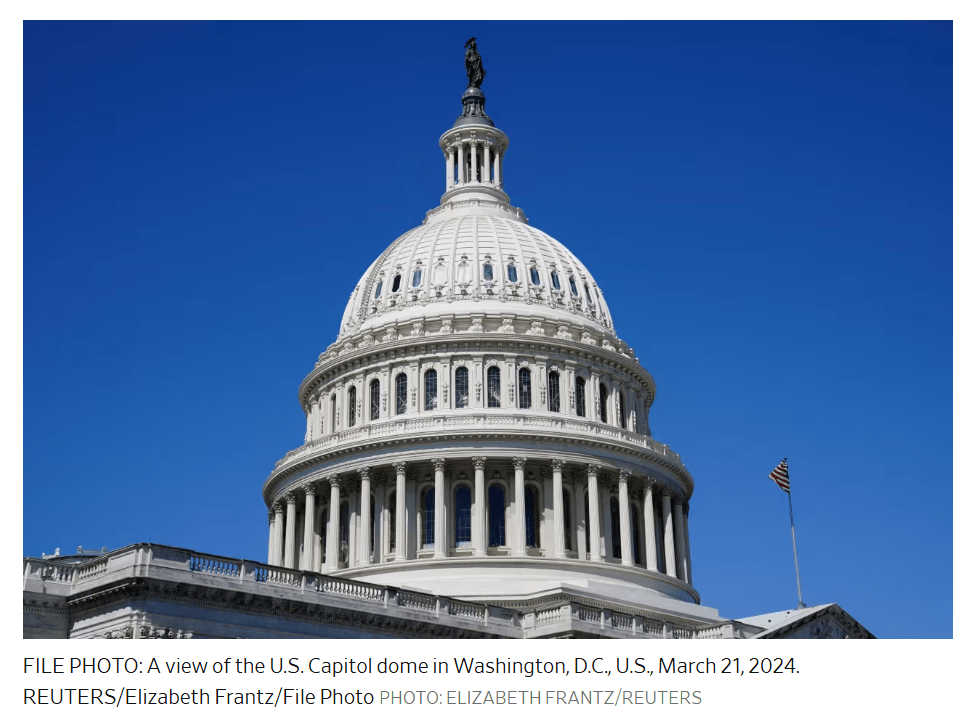Republicans have two shots at budget reconciliation bills in 2025. What should those bills include?

The problem for Republicans is primarily the House, not the Senate.
Republicans have a 220-215 edge but Gaetz resigned and two reps have been nominated by Trump for appointments.
Until there are special elections for replacement (two in Florida and one in New York) Republicans will have the slimmest of slim majorities, 217-215.
Since there is no House tiebreakers, Republicans would not be able to lose a single vote.
The GOP’s 2025 Reconciliation Fight
The Wall Street Journal discusses the setup in The GOP’s 2025 Reconciliation Fight
Republicans seem to like circular firing squads, so the nonsurprise of 2024 is that they are already brawling over their strategy for governing when they control Congress and the White House next year. GOP Senators are offering the smarter way to go.
Republicans will be in the fortunate position next year of having two bites at “budget reconciliation,” which under Senate rules lets them pass bills with 51 votes. That’s how Senate Democrats passed the $1.9 trillion spending blowout in March 2021 and the Inflation Reduction Act in 2022 on party-line votes.
Soon-to-be Senate Majority Leader John Thune wants to jump-start the Donald Trump Presidency by using the first reconciliation to pass the GOP’s top priorities—money for border security, increasing energy production and defense. The goal would be to pass this by early February. This would reserve the much tougher puzzle of tax reform for the second reconciliation bill later in 2025.
But some House members, led by Ways and Means Chairman Jason Smith, are criticizing this order of legislative battle. They want to write a tax bill first, or perhaps even stuff the first bill with everything—border security, energy, defense, and a rewrite of the 2017 tax reform. CNN reports that Mr. Smith said prior Congresses have failed to pass more than one reconciliation bill in a single year, and “why would we think in a (220-215) majority . . . that we would over perform?”
Understanding Reconciliation
The key advantage of the reconciliation process is that it avoids a filibuster in the Senate.
There can be two reconciliation bills in a year, one for the current fiscal year, and one for the next.
Here are Budget Reconciliation Basics.
Limitations of Reconciliation in the Senate – The Byrd Rule
Named for Senator Robert Byrd, the Byrd rule (Section 313 of the Congressional Budget Act) was first adopted in the mid-1980s to limit extraneous provisions from inclusion in reconciliation bills. Because reconciliation bills are considered using expedited procedures in the Senate, the Byrd rule is aimed at preventing the use of reconciliation to move a legislative agenda unrelated to spending or taxes, and to some extent it limits Congress’ ability to use reconciliation to increase deficits – at least over the long-term. The Byrd rule prohibits the inclusion of “extraneous” measures in reconciliation, defining “extraneous” as follows:
- measures with no budgetary effect (i.e., no change in outlays or revenues);
- measures that worsen the deficit when a committee has not achieved its reconciliation target;
- measures outside the jurisdiction of the committee that submitted the title or provision;
- measures that produce a budgetary effect that is merely incidental to the non-budgetary policy change;
- measures that increase deficits for any fiscal year outside the reconciliation window; and measures that recommend changes in Social
Any Senator may raise a point of order against an extraneous provision in the reconciliation bill, amendments, or the conference agreement. The Senate Parliamentarian decides whether there is a Byrd rule violation, and provisions struck through a Byrd rule point of order cannot be offered later as amendments. However, Byrd rule points of order can be waived by a vote of 60 Senators.
In addition to reconciliation-specific points of order, reconciliation bills are subject to other Senate points of order, like the Senate PAYGO rule, that apply to all legislation.
Divide and Conquer
Thune has the right idea.
Trying to lump everything in a single bill would add delays and bickering. For example, some will want to restore state and local tax deductions and some won’t. Deciding how to pay for that would create a mess.
The more you try to accomplish in one shot, the more likely you lose votes over something.
Also expiring provisions of the 2017 reform last through 2025 so there is no hurry.
I suggest going for a complete border package. That might be a Byrd rule violation, but if you can get 7 Democrats on board, the Byrd rule can be overridden. Otherwise, just stick with strictly budget items.
A Tiny Republican Majority
For more on the legislative issues facing Republicans, please see A Tiny Republican Majority in the House Will Make Legislation Difficult
Republicans will not be able to pass much of anything if Trump tries to deliver his campaign promises like no tax on tips, no tax on Social Security, and no tax on overtime.
On Meet the Press, Trump Said He “Wants the Illegal Dreamers to Stay”
Yesterday, I commented On Meet the Press, Trump Said He “Wants the Illegal Dreamers to Stay”
Trump’s interview on Meet the Press sounds exactly like the deportation strategy I proposed.
There is an easy deal to be had. Trump gets more money for a wall, more money for border agents, more money for ICE, in return for amnesty for dreamers.
And the gun Trump holds is a credible threat to start deporting everyone.
Then with one bipartisan bill in the bank that also includes all the budget items that will easily clear the House, tackle the tax code next.